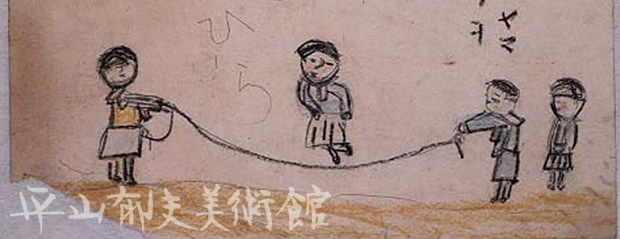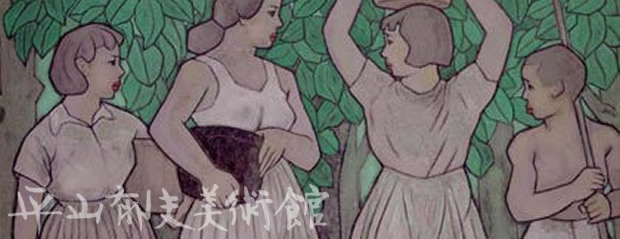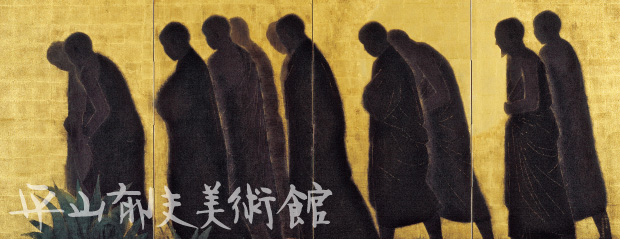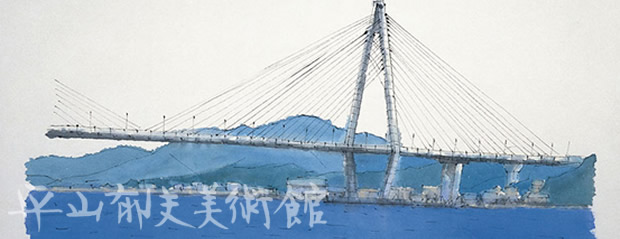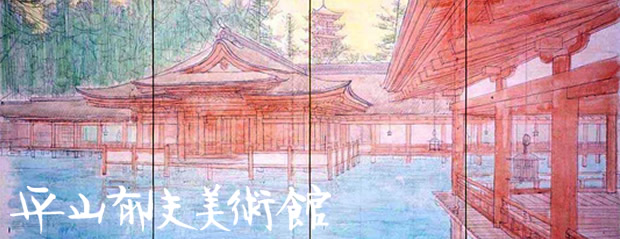Introduction of works generally called Japanese-style paintings (painted using mineral pigments dissolved in nikawa, a kind of liquid glue).
Originally, honga refers to completed works as opposed to rough sketches and preparatory drawings. However, as completed works also include works commonly called “sobyo,” which are painted with watercolors, we now refer to particular works painted with mineral pigments dissolved in nikawa glue as “honga” to distinguish them from sobyo works. The most distinctive feature of Ikuo Hirayama’s honga works is the matiere (surface texture of paintings) created by thick recoating, and the number of recoatings sometimes reached as many as 100 times or more. This is a unique opportunity to experience the real surface texture of his works which is in fact difficult to express in prints.
Before “Transmission of Buddhism” (1959), Ikuo Hirayama’s paintings mainly expressed the customs of his home town, Setoda based on his investigations of these. It is worth noting, though, that his early works do include “Dobutsu Genso (Vision of Animal)” which can be directly linked to “Transmission of Buddhism” in terms of technique.
These are essentially outline sketches, drawings created in preparation for honga (Japanese-style paintings) as a way to brainstorm for ideas, etc. There are shitazu in small sizes and in the same size as honga.
Though Japanese-style paintings are colored using mineral pigments dissolved in niwaka liquid glue, the mineral pigments have fast dry properties compared with oil colors and harden once dry, making it is difficult to peel them off or repaint them. In other words, it is difficult to make any modifications once mineral pigments are painted. Hirayama created shitazu sketches to establish complete ideas before embarking on a new honga creation.
Among shitazu sketches created in preparatory stages, ones in a size smaller than a completed work and showing composition, colors and atmosphere are called koshitazu (small sketches) or chushitazu (medium sketches), and ones of approximately the same dimensions as a completed work and being actually used as a rough sketch are called daishitazu (large sketches).





